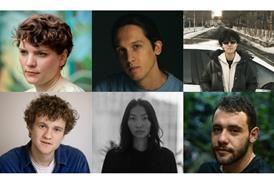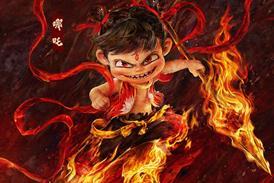Djo Munga’s Viva Riva! is one of the first features in decades to shoot in the Democratic Republic of the Congo and has just been released in the US through Music Box.
Viva Riva follows an enterprising man in Kinshasa (the capital of DRC) who gets hold of a secret stash of fuel and in so doing attracts the interest of a crime lord.
Munga talks to Jeremy Kay about the lack of a filmmaking community in the DRC, how he geared up for his feature directorial debut and why the world premiere at Toronto 2010 was so important.
Why did you want to tell this story?
I wanted to talk about the Kinshasa I’ve seen in the last 15-20 years. The important thing was to get a sense of the city in its complexity, joy and “poetry.”
How did you put the project together?
I targeted cinephiles at all levels. I looked for funding by seeking out companies who are really interested in storytelling, which led me to Canal+ (French TV). I gathered around me a crew that was really into independent cinema. And in Kinshasa, I focused on bringing the best artists on board. This is the first film set in Congo after decades. People, so were motivated. We all had this special excitement.
How did you prepare yourself to direct a feature for the first time?
I relaxed. Very important. I tried to keep in mind what I really wanted to do with the film, which meant being specific to the atmosphere, details and the style. I thought to myself that I would probably be under a lot of pressure during the shoot. And under pressure, you lose your ideas. You want to play it safe. I also watched films that I like and films that I could show to my crew to explain to them the direction we were heading in. And I tried to enjoy the experience as much as possible.
Viva Riva! is very stylised. What would you say is your filmmaking style?
I don’t know if I can talk about my filmmaking style. If I have the opportunity to shoot another three of four films, maybe I’ll start to look at my work and have an idea of the style I’m developing. For sure I’m a director sensitive to style. I like colors, I like elegance, and in terms of rhythm, Viva Riva! is certainly a film that looks like what “I feel inside” as movement.
Is there a big filmmaking community in DRC?
No. There is nothing at the moment. A few filmmakers who have done documentaries.
Is fuel smuggling a persistent problem in DRC?
The crisis I’m describing in the film did happen in the years 1999-2001. Smuggling still exists but on a lower level.
Did you draw on any influences for the characters of Riva, Azor and Nora?
My influences were mainly real people like all the characters in the film. Either I knew them, I’ve seen them or they are a construction of people I’ve seen in various places.
How helpful was the Toronto premiere to the life of your film?
Toronto was essential. All distributors of English-speaking countries picked it up there (US, UK, Canada, Australia and New Zealand). The Berlinale picked it up there too. It was great for the film.
Why did you go with Music Box for US distribution?
Amongst the various US distributors who expressed interest in our film, I’d say they were the ones who best understood the philosophy of the film. Even in the releasing of the film, they show a nice quality in their work. Quality relations are important at every stage of the filmmaking process.
What are you doing next?
I’m working on a thriller set in Kinshasa that involves the Chinese and the Congolese. It’s the story of this Chinese detective who comes to Kinshasa to try to catch a Chinese gangster. The reality he discovers is much different from what he expected.






















No comments yet